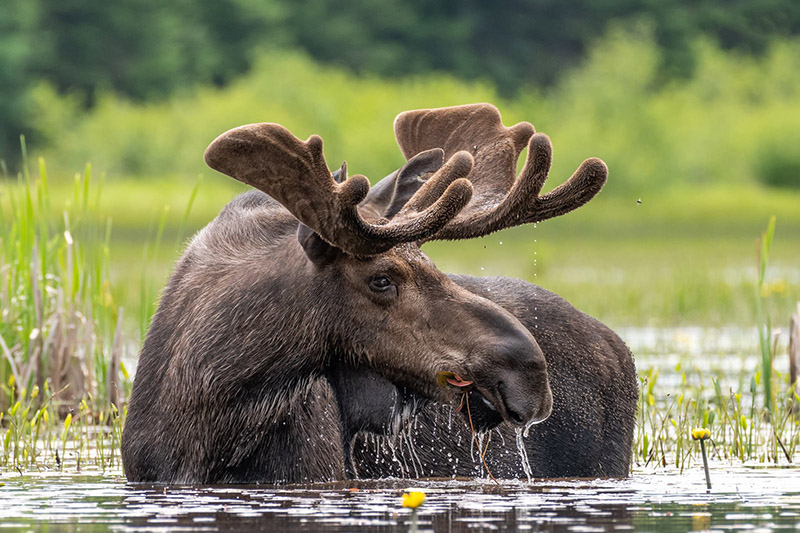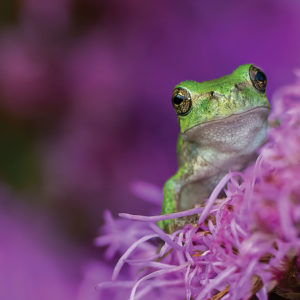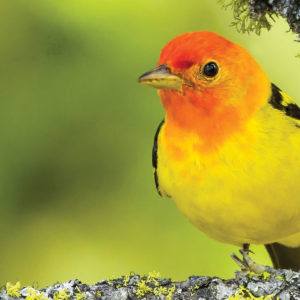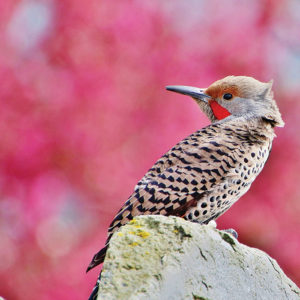Calendar Image: The Moose
What Should I Know About Them?
The North American Moose is an elegant giant. Occupying the Boreal Forest, the moose depends on the vast expanse to reach its enormous size. Eating up to 10,000 calories a day in vegetation, their favourite foods consist of pine cones, the needles and twigs of the Balsam Fir, soft mosses, lichen and aquatic plants. Incredibly, this diet gets male moose to a staggering weight of roughly 1600lbs and females at 1300lbs. This makes the moose the largest of the deer species. These mammals are remarkable; but as climate change, habitat destruction, parasites and hunting continue to threaten their survival, populations of these creatures are fluctuating across the nation.
With long legs and wide cloven hooves, moose are designed for the cooler climates in the north and its terrain. Landing each step softly on the snow-covered grounds, swimming lengths through lakes with ease and diving to depths of five-meters seeking an underwater treat. Their long legs not only hold their weight but also add to their height of six-feet at the shoulder. This makes the moose a perfectly adapted animal among the towering trees of Canada’s Boreal Forest.

Where Can I Find Them?
There are four sub-species of moose across North America. The sub-species are set by the region they’re found. The Eastern Moose can be found from Western Ontario all the way to the Atlantic Provinces. The Western Moose territory is from British Colombia to Western Ontario. The Shiras Moose lives in the Rocky Mountains of Alberta and British Colombia. And, lastly, the Alaskan Moose resides in the Yukon. Above all, the four of these moose sub-species carry the same trait of adaptability.
Hunting aside, the moose have adapted to the changes around them. They migrate when they see fit. Not being a big fan of the intense heat, they move north for a cooler climate as things start to heat up. You can hope to spot a moose on your way through Sunset Country on your summer vacation or experience (with caution!) a roadside moose in the spring, grazing at the Algonquin Park in Ontario!
Fascinating Facts about the moose:
- Moose have a pendant of furry skin coming from their neck, aptly named ‘the bell’.
- Calves gain weight quicker than any other species in the same family, and can also outrun a human by five days old!
- Male moose will grow velvety antlers each year for mating season (late September to mid-October) and lose them once the season is done. Evidence of losing the velvet coating is a tell-tale sign that mating season is in full swing, leaving the antler’s to be tough bone. Younger males will keep the antlers longer than older males.
- The average lifespan of a moose in the wild is 15-20 years.
- One of the moose’s favourite treats are Water Lilies!



